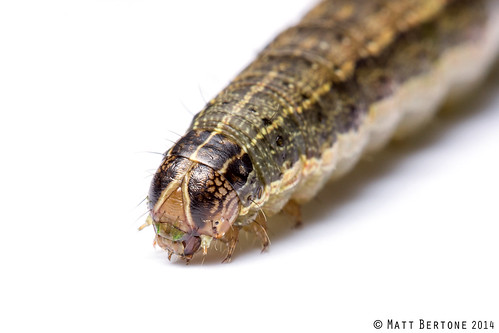This post is the first in a short blog series called “Know your Insect”. The images and descriptions are written by Entomology graduate students enrolled in a seminar of the same name.
Insect mandibles or jaws are heavily sclerotized structures that serve a variety of functions including feeding and defense. In ants, mandibles are also used as tools to perform activities like cutting leaves, digging, carrying and taking care of the brood. Yet another interesting aspect of insect mandibles is that they can play an important role in mating success, stag beetle males (Coleoptera: Lucanidae) grow large mandibles that seem to attract more females (Gotoh et al. 2011).
Insect mandibles are mainly composed of chitin and proteins; adjacent chains of chitin are cross-linked by hydrogen bonds to form chitin microfibrils. The physical properties of insect mandibles are affected by the cuticle thickness, the arrangement of chitin fibers, the protein content and metal deposition (Klowden 2008).
Some insects increase the hardness of their mandibles by incorporating metals such as zinc, manganese, copper and calcium. The metals are mainly found in the cutting edges of the mandibles to enhance hardness and reduce abrasive wear (Cribb et al. 2008; Schofield et al. 2002).

Not all insects accumulate the same minerals in their mandibles. The mineral composition seems to be associated with the taxonomic group to which a particular insect belongs. For example the accumulation of Zn is widespread in lepidopteran larvae. It is also present in termites, ants, grasshoppers, and some beetles. Calcium, on the other hand, is mainly found in Diptera (Cribb et al. 2008; Schofield et al. 2002; Hillerton et al. 1984; Cribb et al. 2005).
Zn content is highly correlated with mandibular hardness in termites, ants, and the marine worm Nereis virens (Cribb et al. 2008; Schofield et al. 2002; Broomell et al. 2006). Mineralization is not the only way to increase mandible hardness though. Some beetles, have mandibles harder than stainless steel, yet lack minerals. A better understanding of the physical and chemical structure of the insect cuticle would be of great interest in materials research (Cribb et al. 2010).

Another important aspect involved in the biomechanics of insect feeding, is the attached mandibular musculature. Together mandibles and muscles affect the force, speed and precision of mandible movement (Clissold 2007).

My research focuses on the study of adaptation mechanisms used by insect herbivores to feed on particular plants. During feeding, herbivores need to disrupt the plant cell walls to get access to the nutrients. This disruption is usually first physical and then chemical; therefore, the structure of the leaves can inhibit the initial acquisition of nutrients. For example, plants with high lignin content will be harder to disrupt. The accumulation of cellulose, lignin, silicon, and trichomes are barriers for mechanical damage and serve as plant mechanical defenses by reducing digestibility and causing wear of the insect mandibles.
For insects to be able to feed and develop on plants with hard leaves, they need to adapt their physiology, morphology and development. Lepidoptera larvae (caterpillars) are able to increase their head capsule size when feeding on hard plant tissues (Bernays 1991). Larger head capsules can house larger mandibular muscles; thereby, increasing the force required to feed on tough leaves.

Leave a Reply